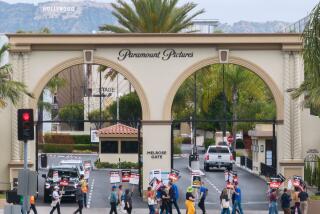Forecast Shows Muted Recovery
UCLA business forecasters, the first in the nation to predict last yearâs recession, are once again voicing caution, this time about the strength of the fledgling recovery.
Despite a spate of upbeat economic news and rosy predictions by other prominent forecasters, UCLA analysts are holding fast to their assessment that the national recovery will be one of the most muted on record. The quarterly UCLA Anderson Forecast being released today predicts U.S. gross domestic product growth of no more than 2% or 3% this year, much lower than the 4% to 5% bounce the U.S. economy typically sees coming out of recession.
Part of the wariness stems from debt-strapped U.S. consumers, who did their part during the downturn and thus canât be expected to have enough pent-up demand to stoke the economy. That leaves businesses to pick up the slack and drive the recovery forward. But UCLA economy watchers see little evidence that companies will return to investing heavily in technology and capital equipment during a period of flimsy corporate profits.
Throw in a shaky export sector and anemic job growth, and youâve got a recovery without much pep in 2002, said Edward E. Leamer, director of the UCLA Anderson Forecast.
âThere is no locomotive pulling the economy forward,â Leamer said. âThis isnât going to be a typical recovery ... with a strong bounce back.â
Other economists recently have upped their GDP projections, in part because U.S. companies are beginning to rebuild depleted inventories and to purchase more capital equipment. This month Merrill Lynch & Co., for example, raised its first-quarter GDP growth estimate to 3.5% from 2% and is calling for 5% annualized growth for the second half of the year.
âObviously, Iâm much more optimistic than the UCLA folks,â said Bruce Steinberg, chief economist for Merrill Lynch in New York. âThese low-ball forecasts are underestimating the dynamism of the U.S. economy.â
But UCLA economists, who issue forecasts for the national and state economies every three months, contend there is reason for caution.
For starters, some of the cushions that have been supporting consumer spending appear to be deflating. Mortgage refinancing, which put billions of dollars into homeownersâ hands, has slowed as interest rates have risen.
Likewise, UCLA economists are doubtful that spending on high-tech equipment and other capital goods will rebound significantly this year. Leamer said heavy investments in information technology tools in the late â90s never translated into profits for many business owners, who now are looking for measurable returns before committing to such spending.
âBusiness investment collapsed because companies couldnât figure out where the profits were,â Leamer said. âItâs unlikely that theyâve solved that problem.â
In California, which weathered the downturn better than much of the rest of the country, UCLA analysts nevertheless are projecting the weakest job creation since the early â90s. On average, they expect nonfarm payrolls to increase by only about 106,000 jobs in 2002--an average growth rate of 0.7%.
In February, California posted an unemployment rate of 6.1% while the U.S. rate was 5.5%. But sluggish job growth here and nationwide is likely to push up both those figures in coming months, said Tom Lieser, senior economist with the UCLA Anderson Forecast. He said that the U.S. jobless rate could rise to about 5.7% and that Californiaâs could hit the 6.4% range later in the year and stay that way until late 2003.
The stateâs budget woes also could prove a drag on the California economy, Lieser said, hindering government spending that otherwise could have primed the economic pump. Due in part to the steep drop in tax revenue from tech-related capital gains, stock options and bonus revenue, California is facing a budget deficit of $17 billion, by some estimates.
âItâs forcing cuts on things like infrastructure improvements,â Lieser said. State government spending âisnât going to be a major source of stimulus.â
He said export trade, which has been pounded by a strong dollar and weak overseas economies, also will be a constraint on Californiaâs near-term growth.
Real estate, a mainstay of the stateâs economy during last yearâs downturn, should remain a bright spot, though the recent heady levels of appreciation in Southern California could slow as buyers are priced out of the market.
Lieser said the Southlandâs diverse economy should continue to be a source of stability, particularly Orange and San Diego counties, where unemployment is still less than 4%, and the Inland Empire, which continues to pump jobs into the region.
However, Los Angeles County, whose February employment rate of 6.4% is the highest in the five-county area, faces some particular challenges. Over the last year, for example, L.A. County has lost 17,000 motion picture jobs due to runaway production and an ongoing restructuring of the movie business, said UCLA economist Christopher Thornberg.
He said the 12% drop in industry employment is similar to the plunge in aerospace jobs in the early 1990s. But he said it hasnât registered the same shock on the regional economy because the entertainment industry is fundamentally healthy.
âWeâre evolving from a production center to a design center,â said Thornberg, who will discuss the future of the regionâs entertainment industry today at UCLAâs quarterly forecasting conference. âBut thatâs not a bad thing.â
*
(BEGIN TEXT OF INFOBOX)
Sluggish Growth Seen
(text of infoxbox not included)
More to Read
Inside the business of entertainment
The Wide Shot brings you news, analysis and insights on everything from streaming wars to production â and what it all means for the future.
You may occasionally receive promotional content from the Los Angeles Times.










